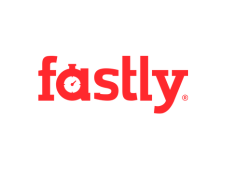Adrian Balfour and Ky Nichol
The London Olympics is now well underway – the culmination of seven years’ work by more than 9,000 delivery staff. Getting to the opening ceremony on time and on budget has been a long and highly complex program involving hundreds of interdependent teams and dozens of different stakeholders.
While the triumphs of athletes in the sporting arena might seem a million miles away from the world of business and high finance, the hurdles overcome by the organizers en route to the finish line offer valuable lessons for program managers working on all kinds of large-scale, long-term, high profile organizational challenges – from mergers and acquisitions to banking divestments, regulatory changes or IT investment optimization. Pcubed has been closely involved with the delivery of many major sporting events over the past 10 years – from the Olympic and Commonwealth Games to soccer’s World Cup – and none more so than London 2012. Pcubed is also currently working on the upcoming Formula 1 Grand Prix in New Jersey next summer and Super Bowl XLVII coming to New Jersey‘s Meadowlands in 2014.
Throughout these programs, Pcubed has collected a series of lessons, or best practices, that are directly applicable to the challenges faced by those in banking and financial services managing complex projects or high profile initiatives.
Engaging Stakeholders and Maintaining Momentum
Making sure stakeholders come to decisions on time – and getting those decisions to stick once they’ve been made are two absolute imperatives of successful program management. More than 30 stakeholder groups were involved in organizing the London Olympics – from the national government
and international sporting organizations to local residents and businesses. That’s a large and diverse group with very different interests – all of whom can block progress and cause delays if not brought into alignment early on. Tactics and a clear process are needed or decisions will end up late and deadlines will be missed.
Transparent decision making
Transparency is the key to the success of stakeholder management. The main project review group on London 2012 brought together the four major funding parties to approve the scope and cost of projects from the start. Initially some stakeholders were concerned decisions were being overly influenced by the strongest personalities of the group. The solution was to draw up seven clear and objective criteria to take into account all the factors involved with each project business case. For the Treasury, for example, cost and risk were the main factors; but to create an even playing field other issues, such as legacy and sustainability, were given equal weight. After initially investing in the criteria around decision making and ensuring that all parties were satisfied the forum was fair, the timing for decisions sped up rapidly.
Engagement
Engaging directly with stakeholders is absolutely essential. All groups need to buy into the vision of the program and understand its benefits back to their own organizations and communities. Being tactical with communications is a vital part of the stakeholder management strategy. Start with a blank sheet with each individual group and don’t reject any idea out of hand at the initial stage – it’s very important to create an even playing field and not to appear to be prioritizing any one group over another. Another tool is making good use of pamphlets and professional-looking communications to publicize the achievement of key milestones and decisions. The more professional the communication, the more commitment you demonstrate – and people are less likely to try to backtrack and make changes.
Defending your scope
Many games have run up enormous debts because their scope was railroaded by stakeholders wanting to fund noncritical projects or overly iconic designs. It’s essential to define the scope at the start of the planning process and to publish those definitions. By going public with contentious agreements early on, you ensure that stakeholders buy into decisions as they are made and defend the scope from changes once budgets come under tighter pressure down the line.
Maintaining Momentum
Seven years of preparation is a long-term program for any organization; during that time it’s too easy for teams to get lost, forget priorities and get into conflict. This leads to delays. Therefore being very clear about what success looks like at key stages is critical. From the large number of different projects and programs that make up the preparation for a major sporting event, we have learned to focus down and choose 10 milestones from each period, which will fit on a single sheet of A4 paper. These need to be measurable goals that will be published widely to put the right pressure and focus on people and to align internal teams.
Taking Ownership
Getting everyone to think like they own the business is another essential. A few years ago Pcubed carried out a study into why so many big telecoms projects were suffering from delays and overruns. Overwhelmingly, the cause was because projects were getting stuck at gateways. Once one person had done his or her job, it would get delayed waiting for the next person to take it up – as people weren’t taking ownership of the overall project. Once they do that, they’re looking up over the parapet rather than being stuck in their own small silo. It’s important to give people cross functional objectives as part of a team, and across different teams to achieve this.
Building the Machine
To ensure the successful delivery of a long-term program like a major sporting event, a robust system of pre-agreed processes and responsibilities needs to be built. Agree on who will decide what, where decisions can be delegated, which forums decide on which decisions, when they meet and what data they will have. That data should be agreed on before the decision-making meeting itself so time isn’t wasted debating data which could have been challenged at a prior date.
There must be absolute clarity on roles, governance and change control. As deadlines get closer, scrutinizing the structure of project decision making is much harder to do. It’s essential to get the infrastructure in place during the early stages of the project, so it’s ready for the high pressure times to come. It’s very expensive to have to drop projects down the line that were not scrutinized thoroughly enough at the initial stages.
Effective Risk Management
A major sporting event like the Olympics or the World Cup is perhaps the ultimate example of a project that really has to be delivered on time without scrimping on quality. The stakes are very high – and there are too many risks to be able to anticipate all of them from the start. However, some anticipation is clearly needed before the investments are made. For London 2012, quantifiable risk assessments were carried out to allocate how much contingency funding should be allocated to projects as a percentage of their overall cost. If the risk itself didn’t materialize then the money was put back into the wider project contingency budget. This is a sensitive topic; stakeholders are keen to take the money back straight away if it is not used. It needs to be handled carefully.
Beyond the Finish Line
Successful stakeholder management, transparency, scope definition, momentum, staff ownership, risk management: these are all valuable lessons for anyone faced with any big budget, long term, mission-critical program. Whether that task is organizing Rio 2016, planning the merger between two financial services firms or
carrying out an extensive cost reduction program – the challenges have many parallels. The experiences we have had in working on major sporting events have produced a genuinely fresh perspective on difficult programs being carried out across the worldwide banking and finance industry – and hopefully some of the strategies we have outlined here can help propel many more programs on to future success.
For more information about Pcubed, please visit our website,
www.pcubed.com or speak to BABC Northern California President, Colin Brown, colin.brown@pcubed.com.












































